
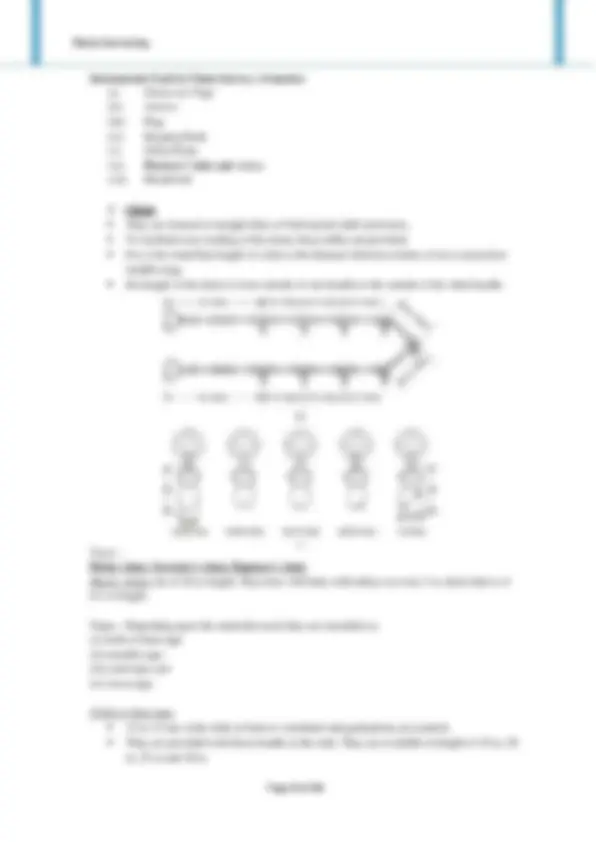
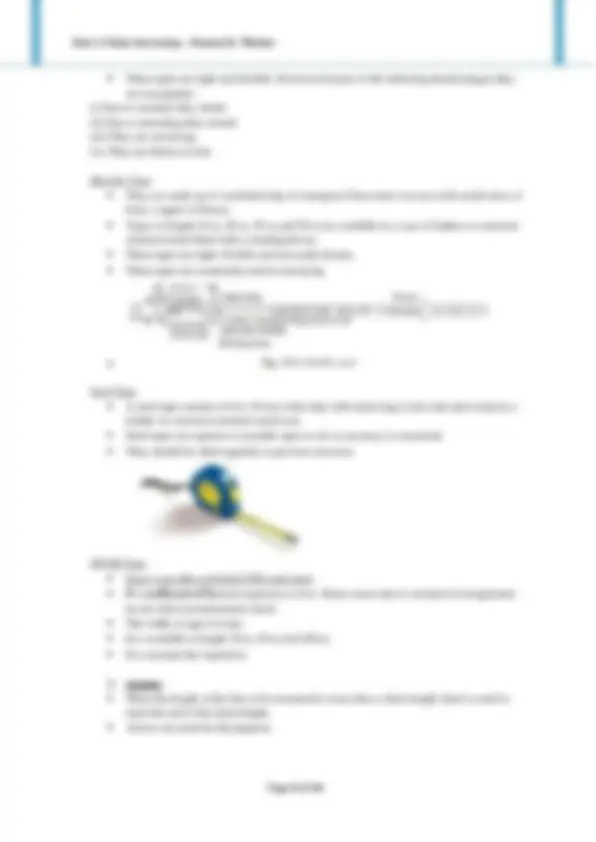
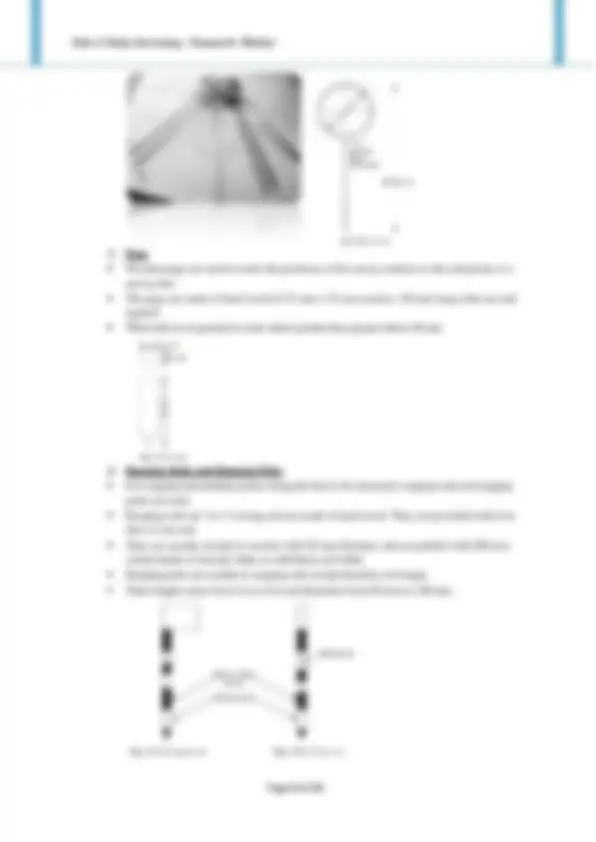
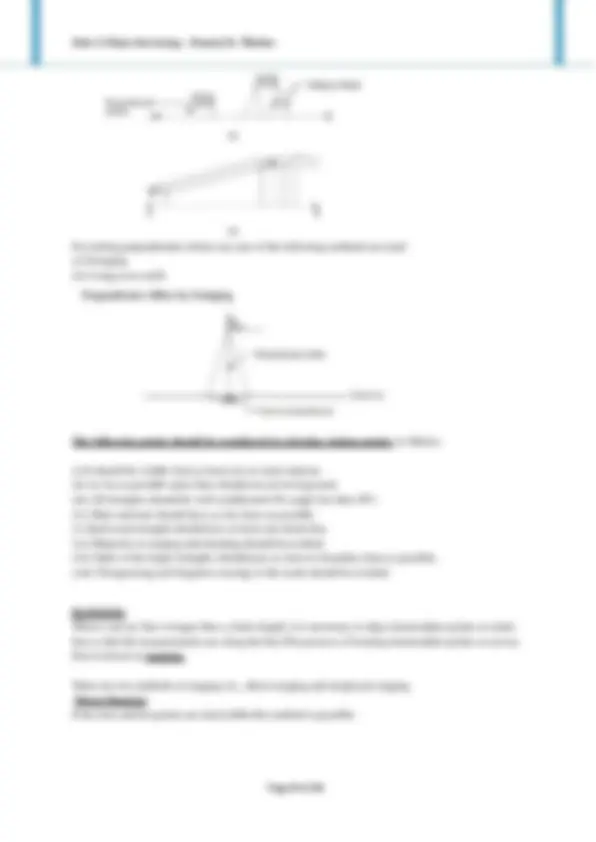
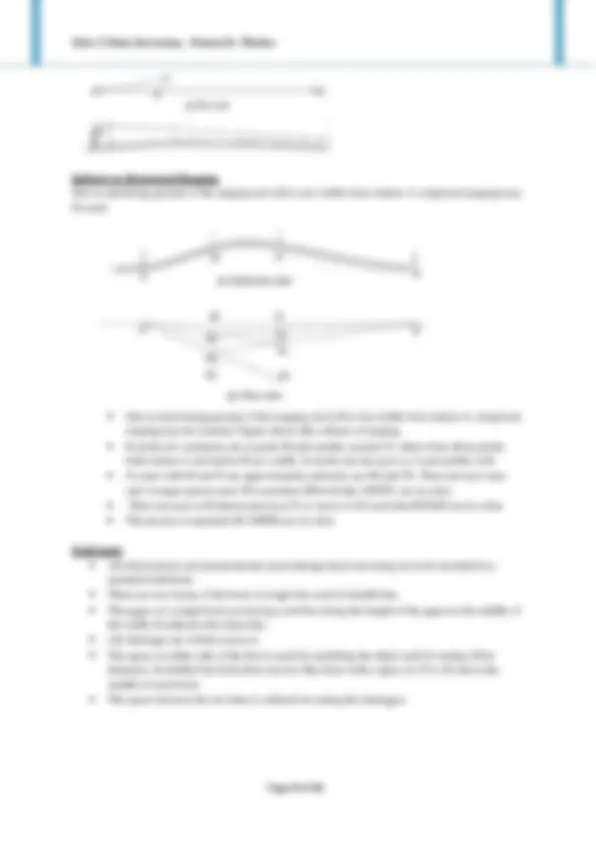
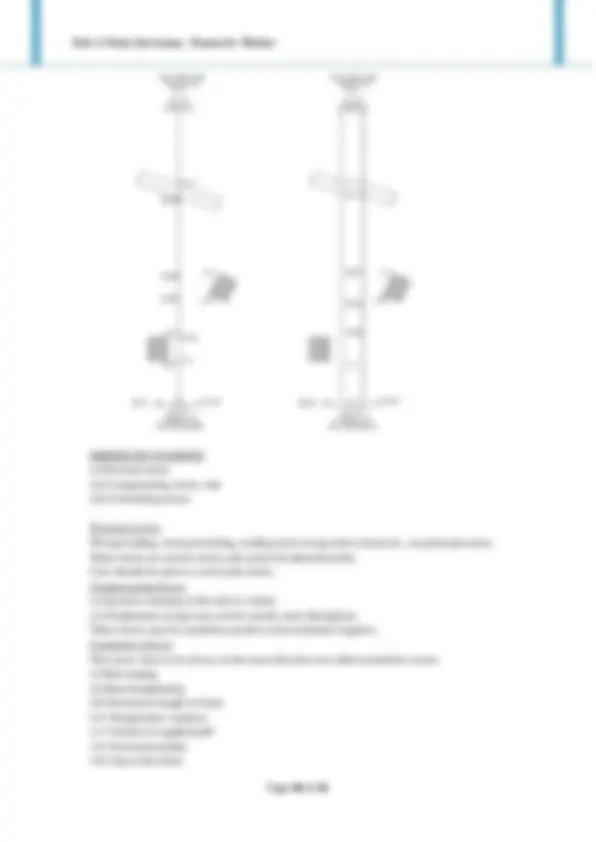
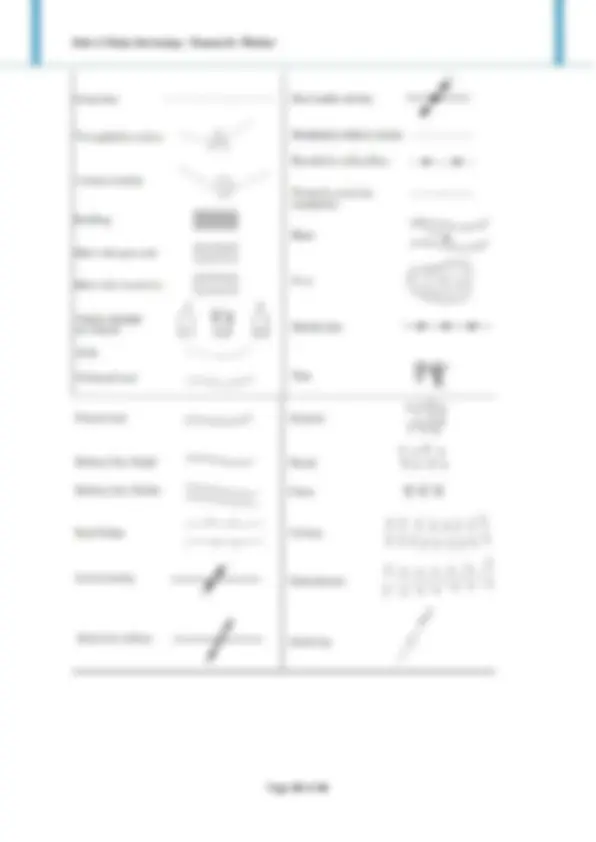
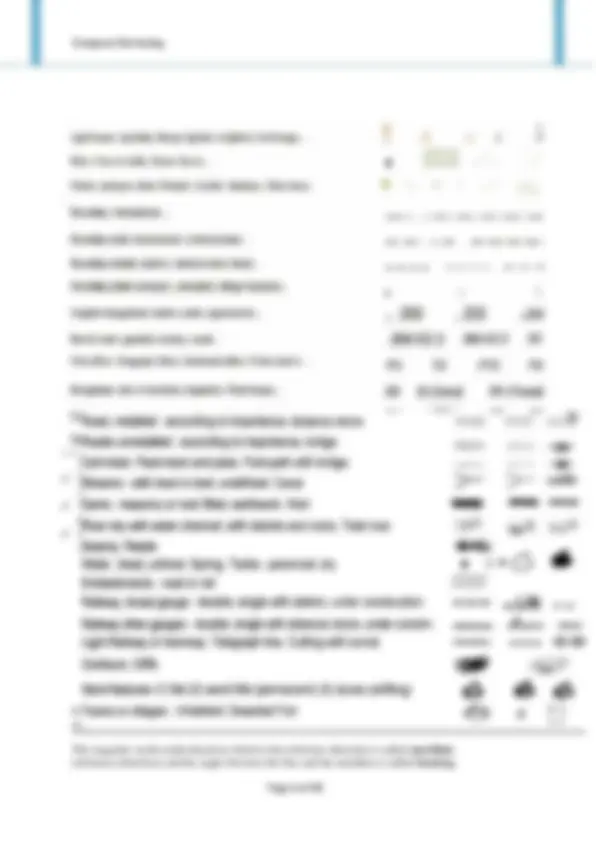
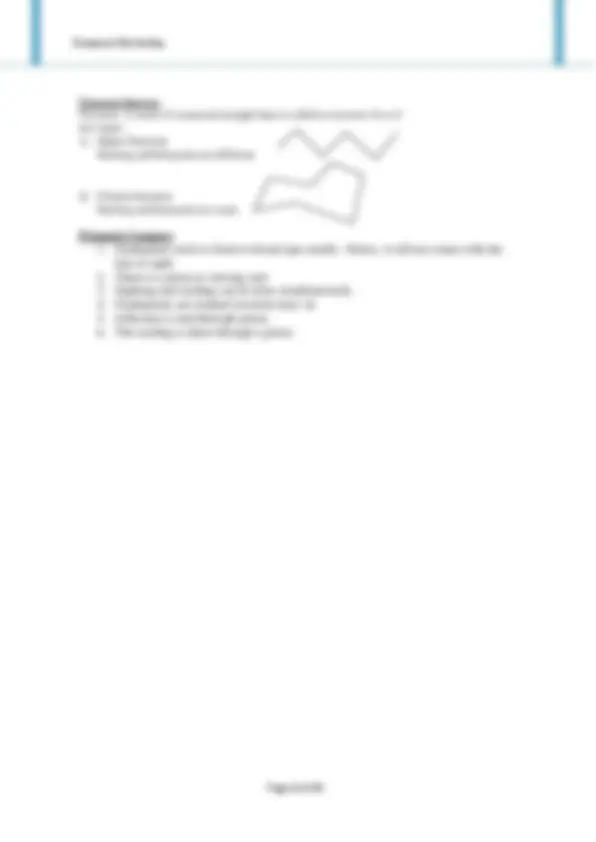
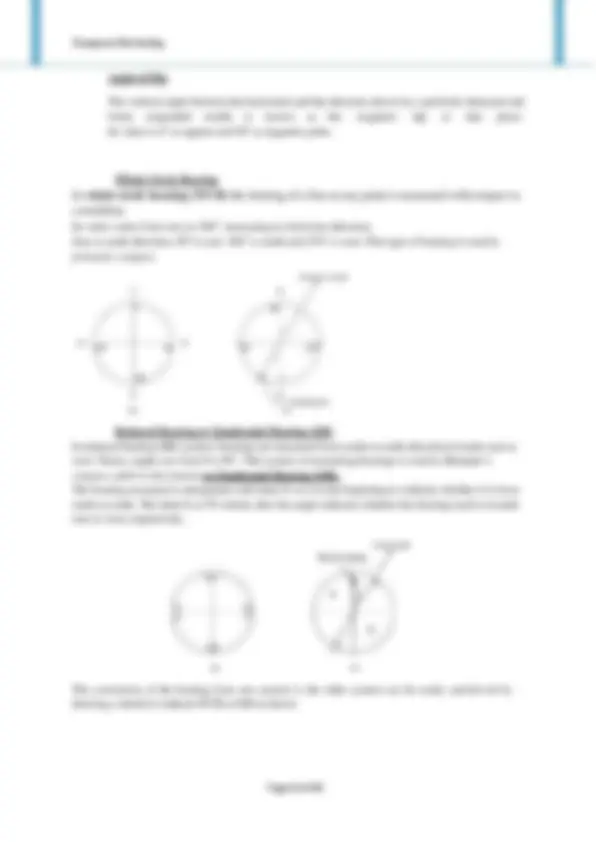
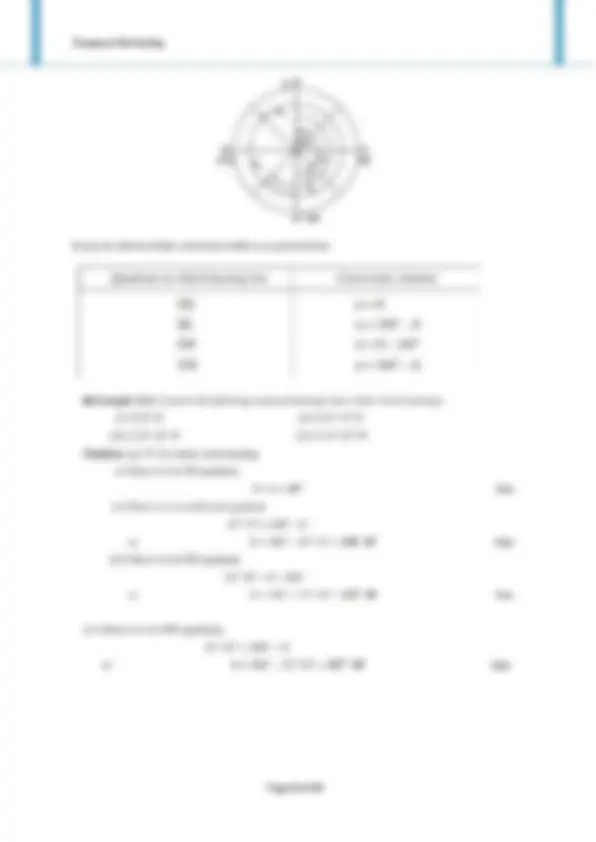
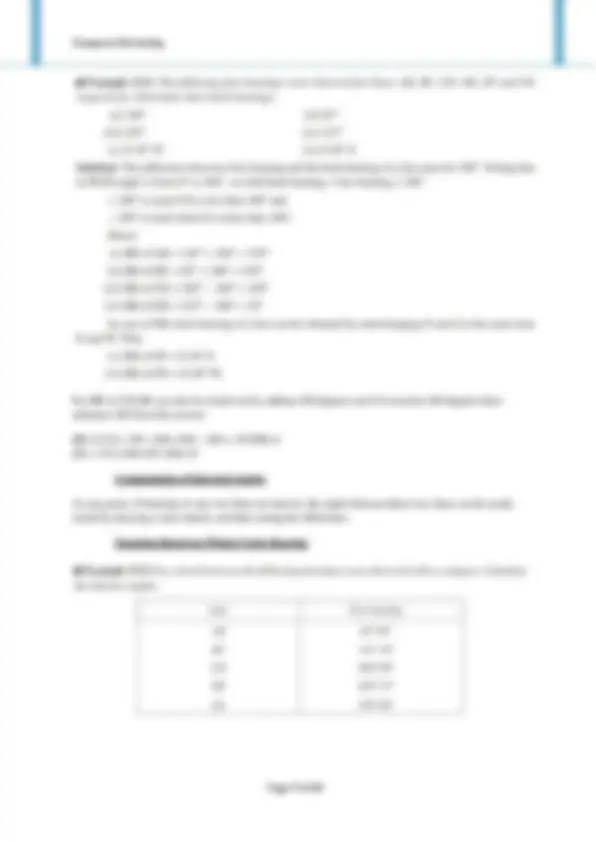
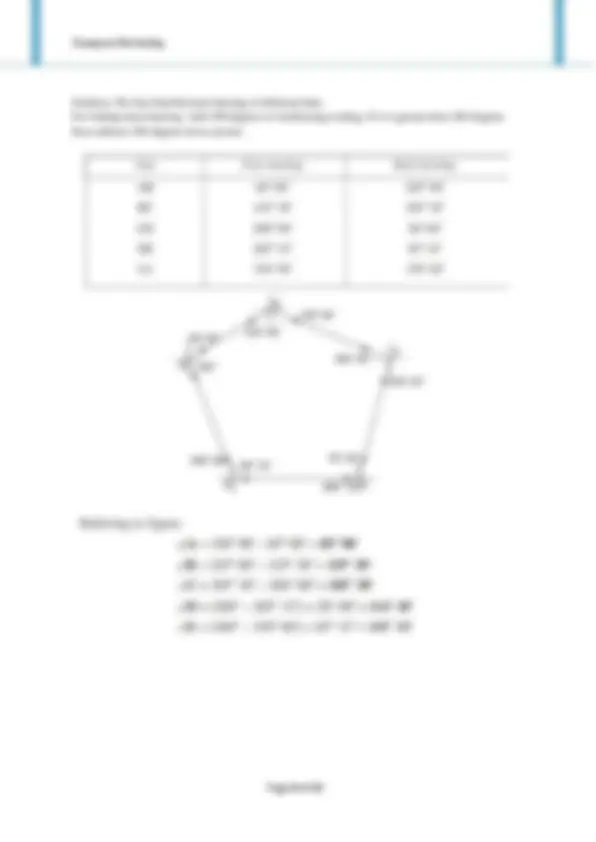
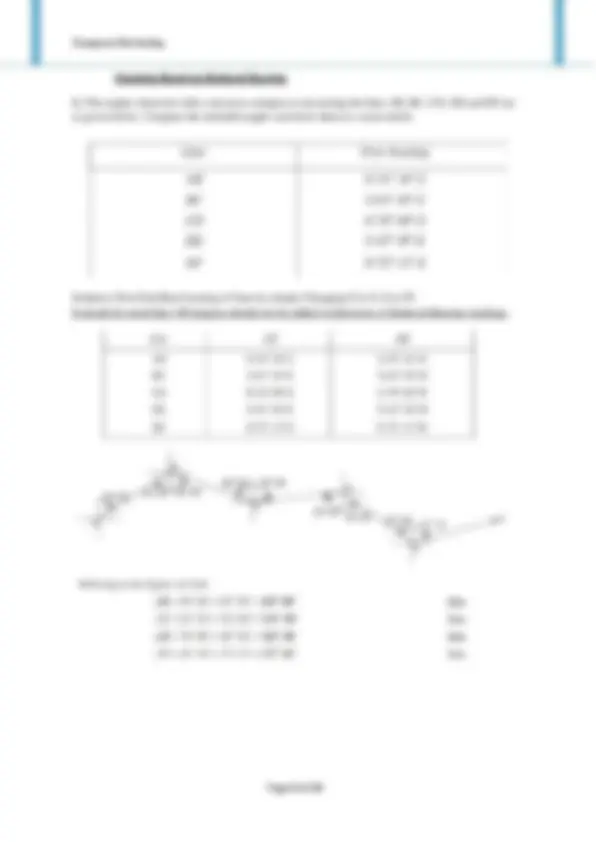
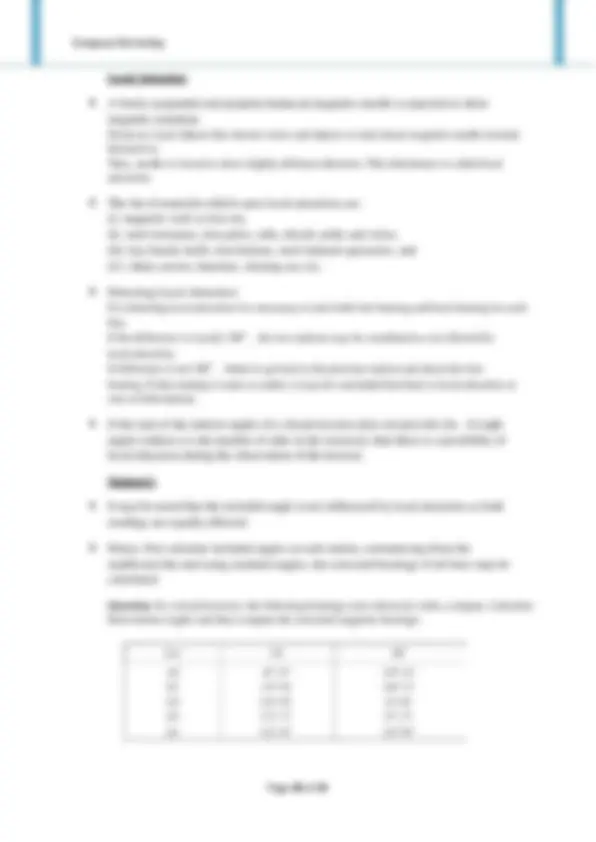
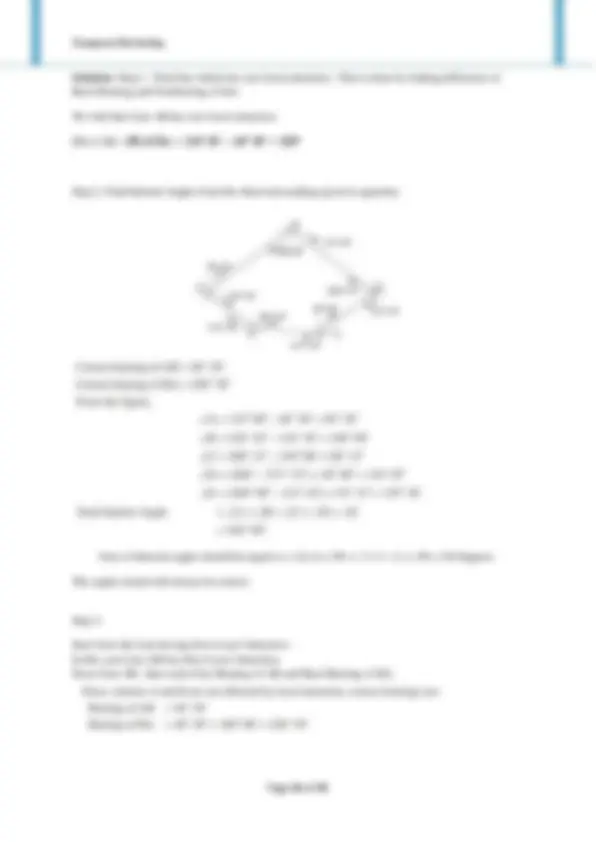
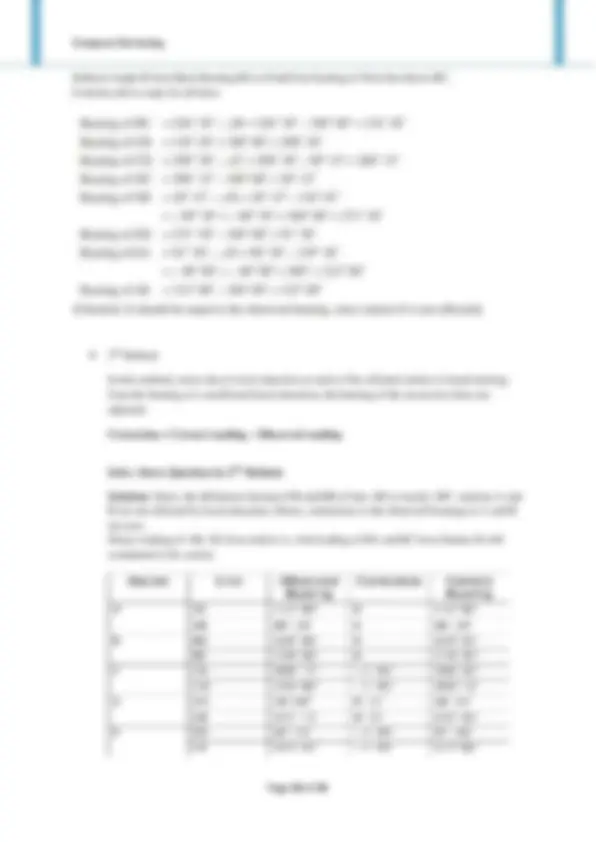
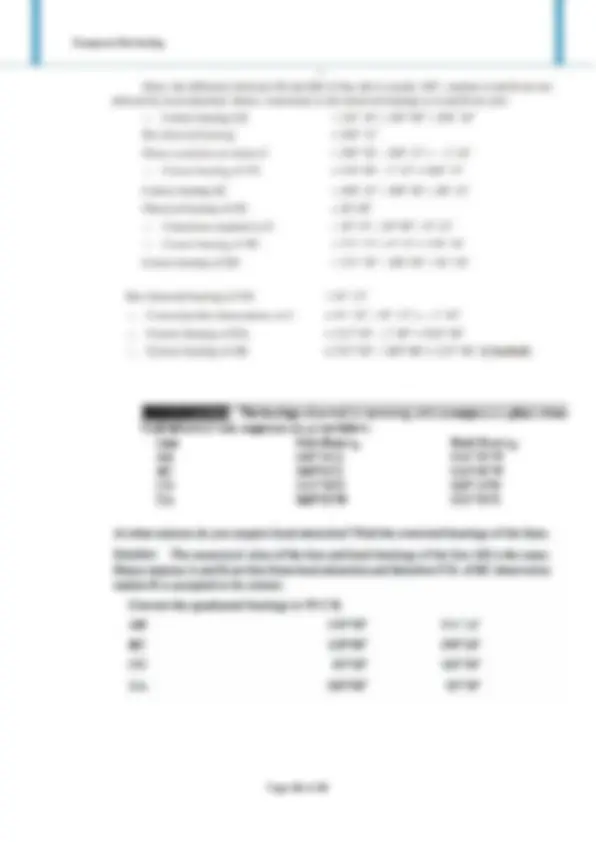
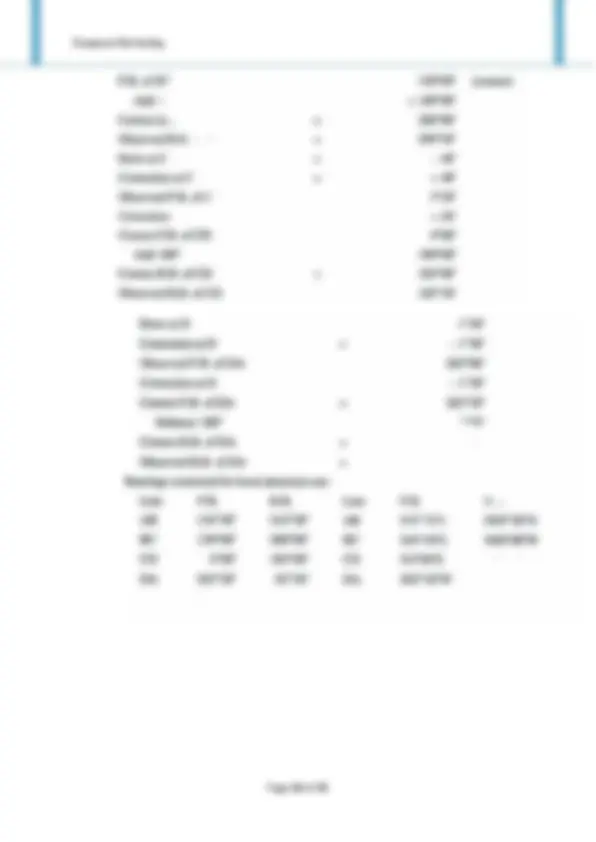
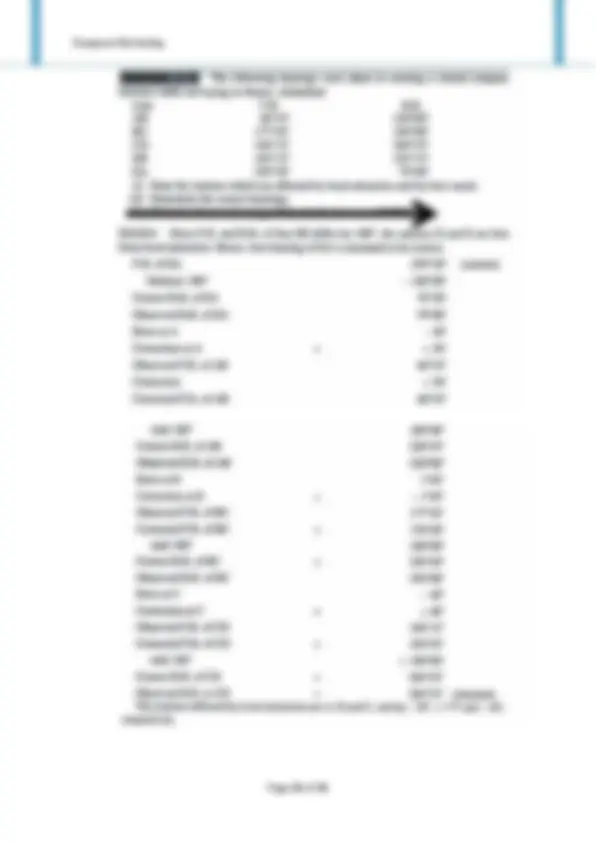
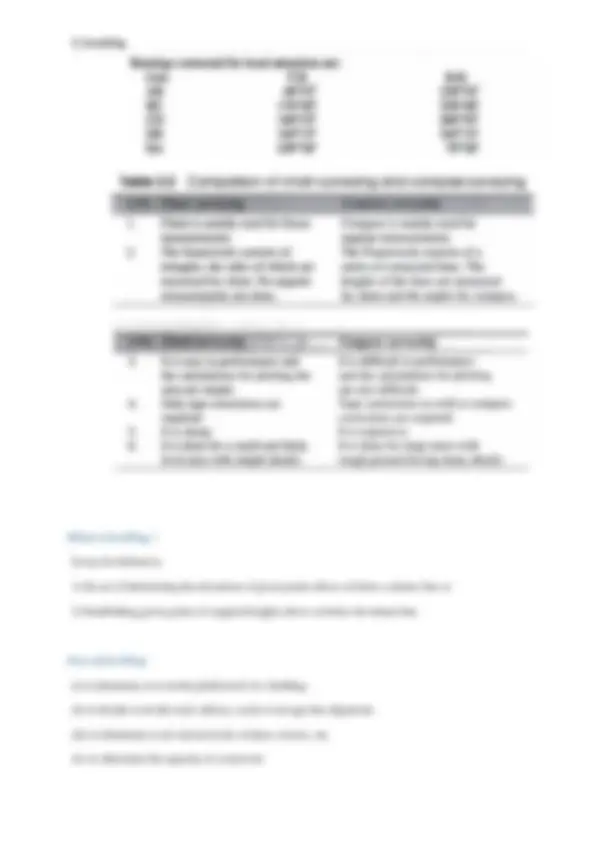
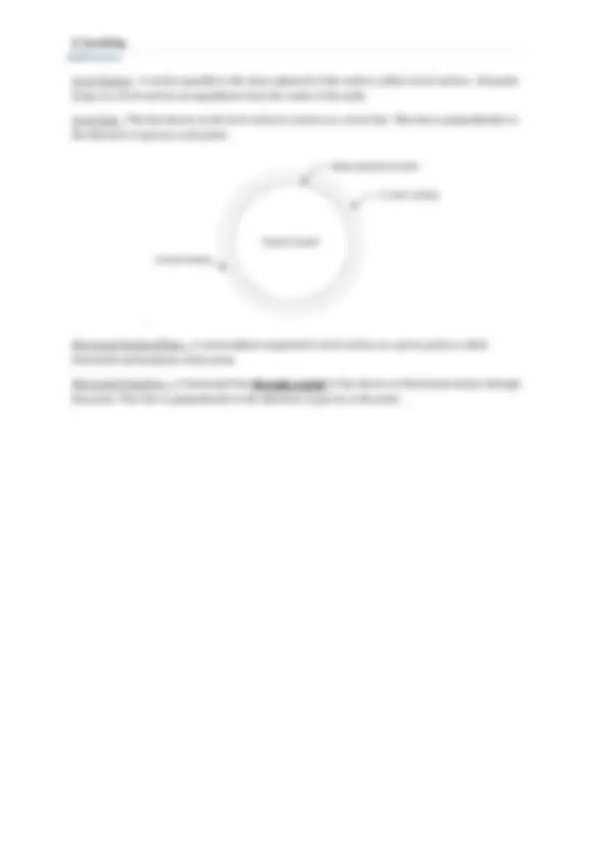
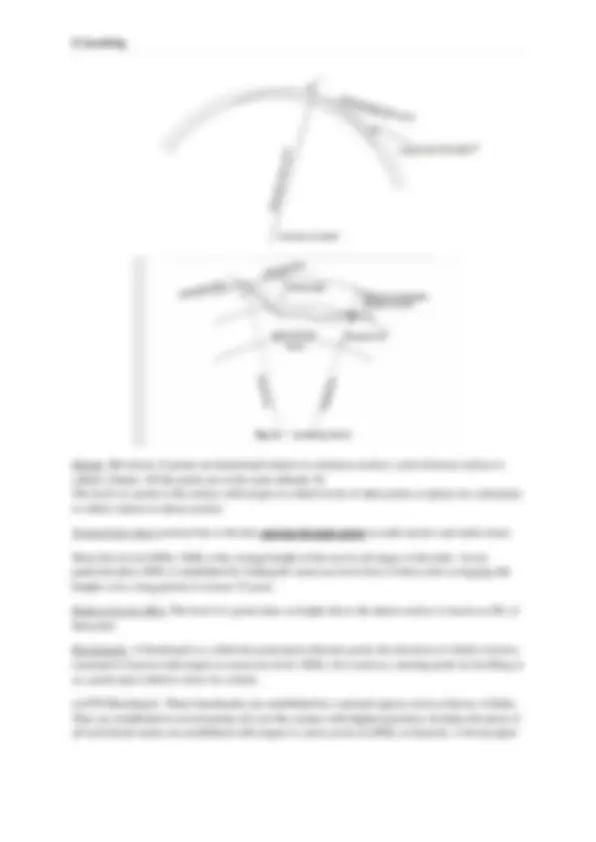
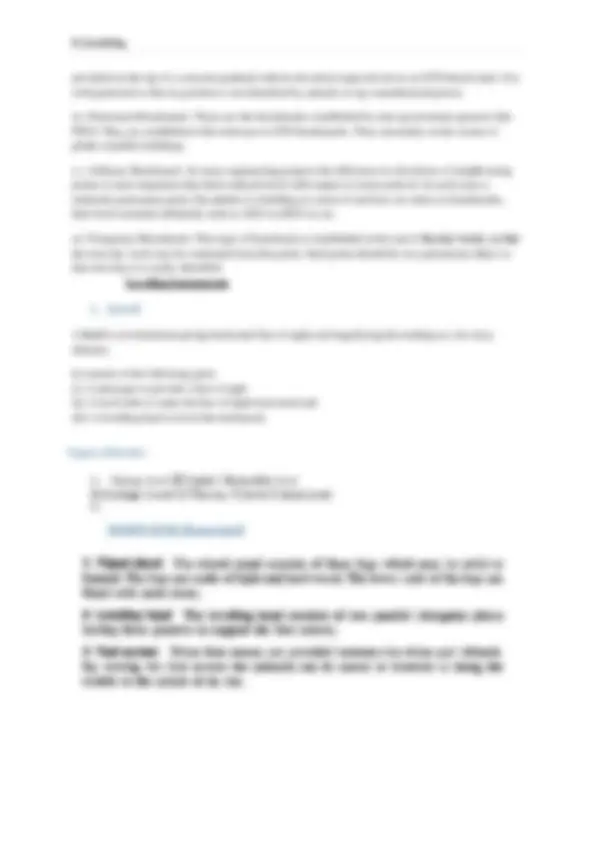
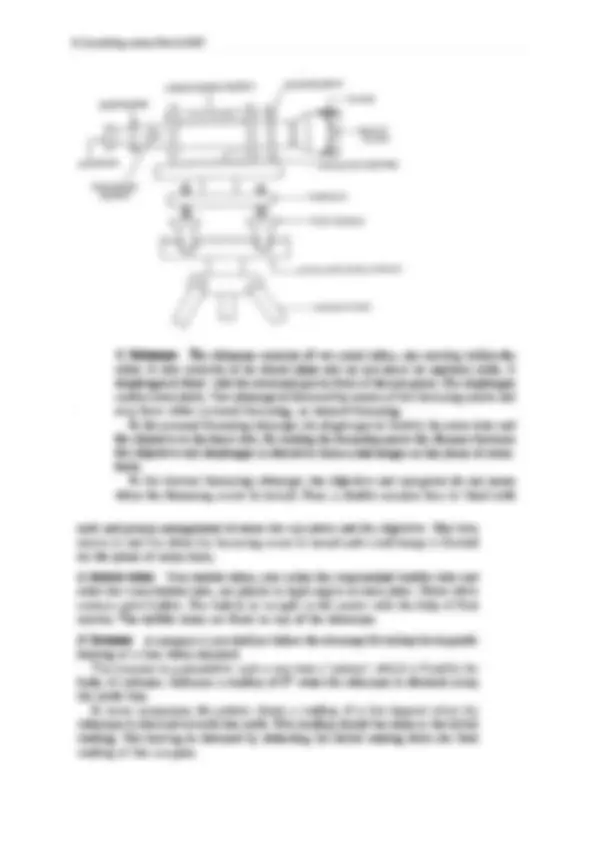
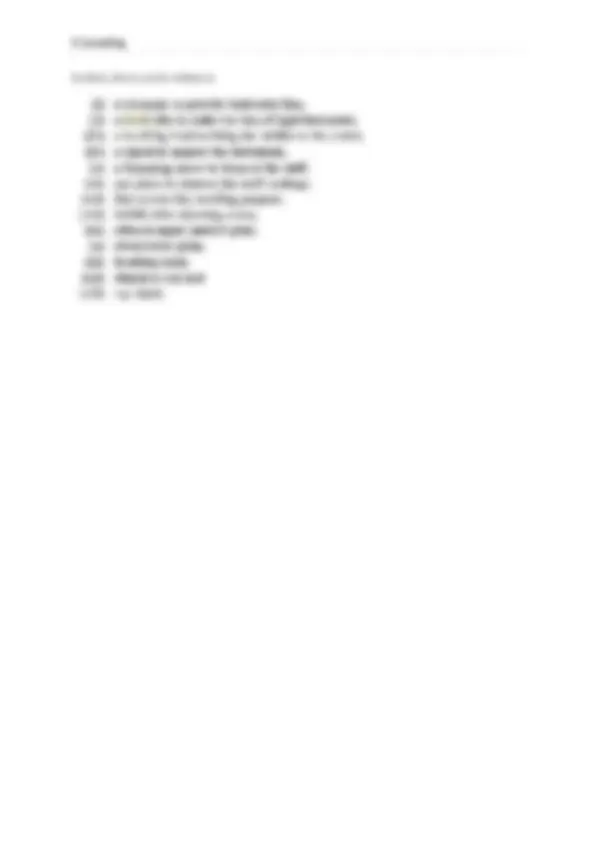
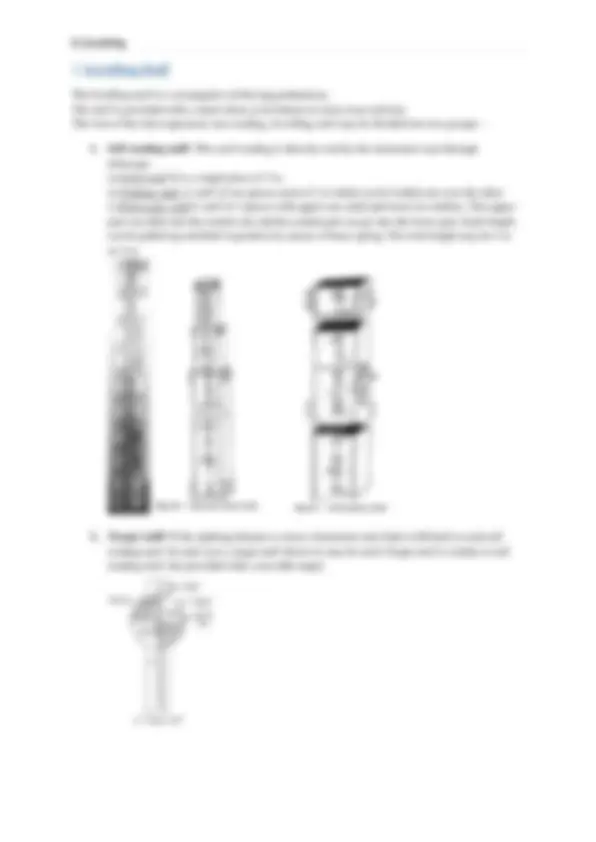
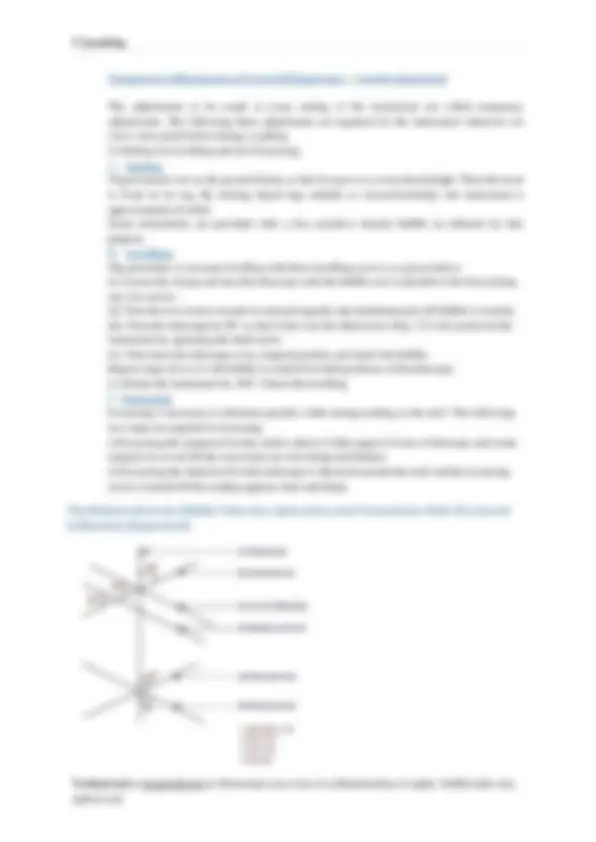
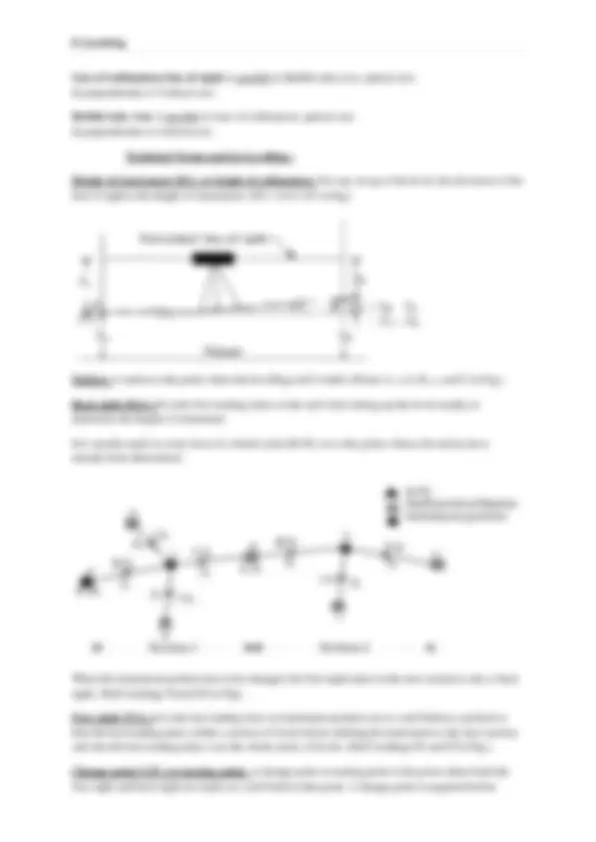
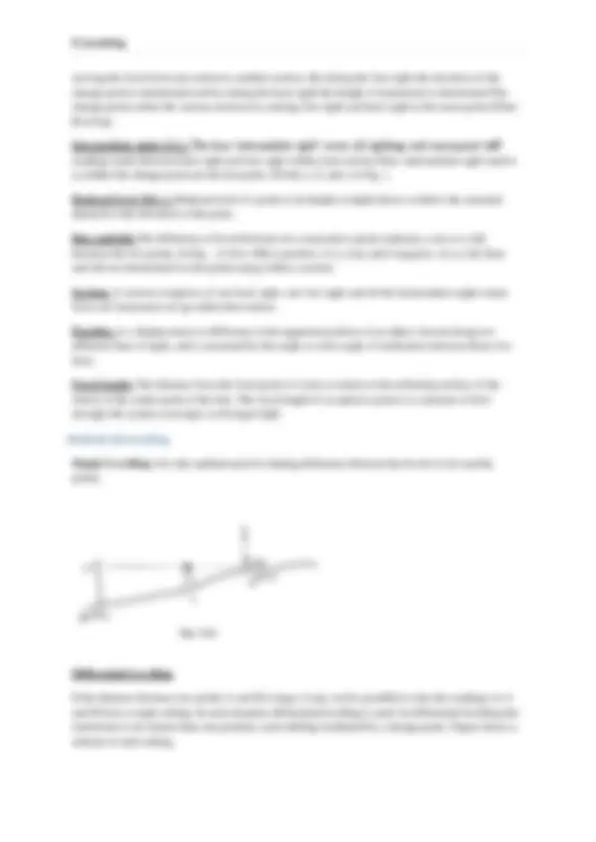
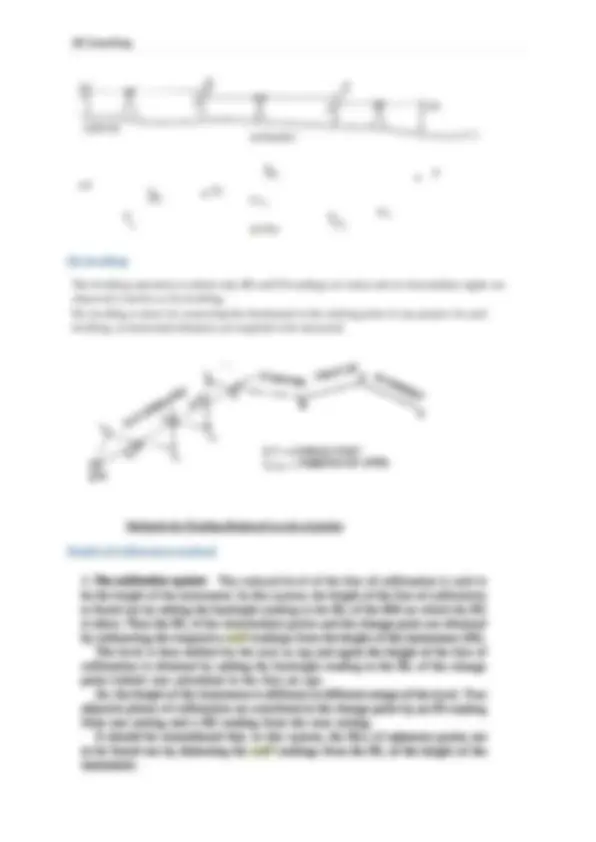
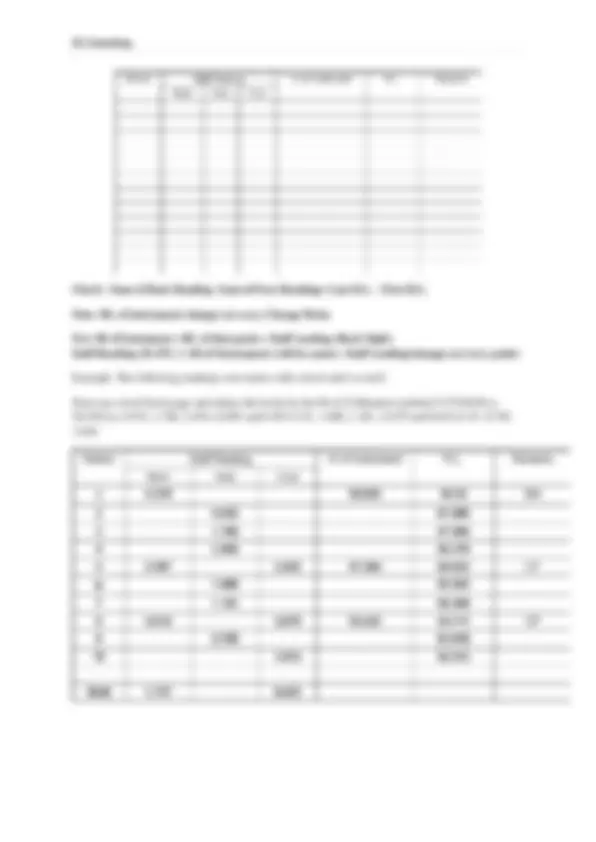
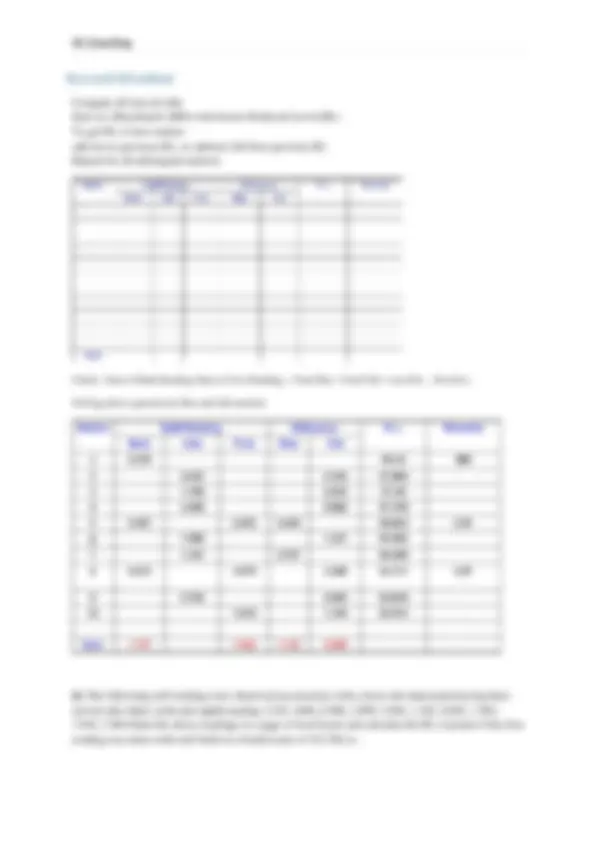
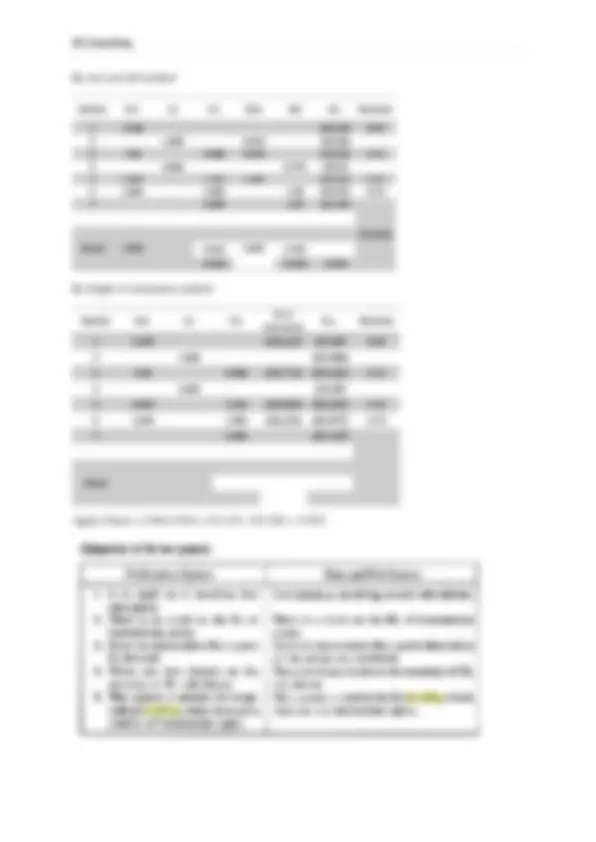
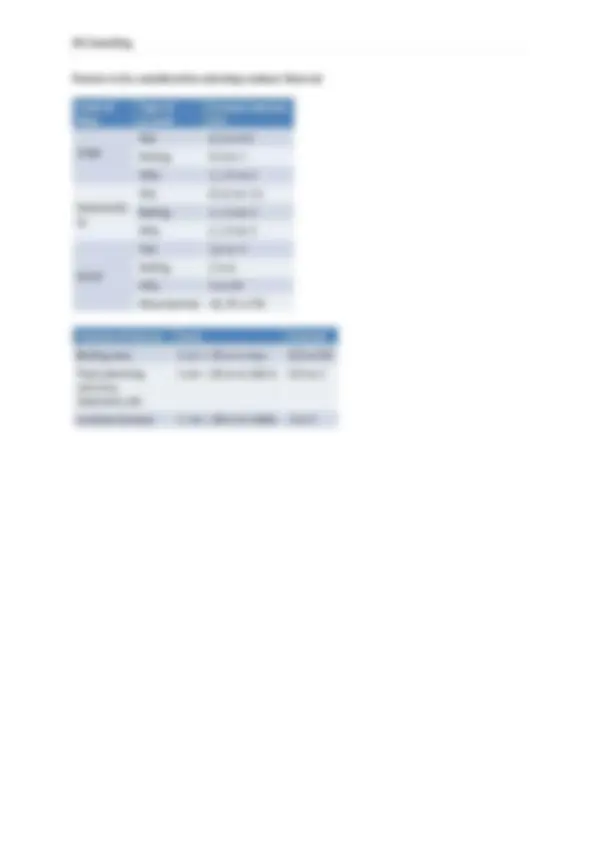
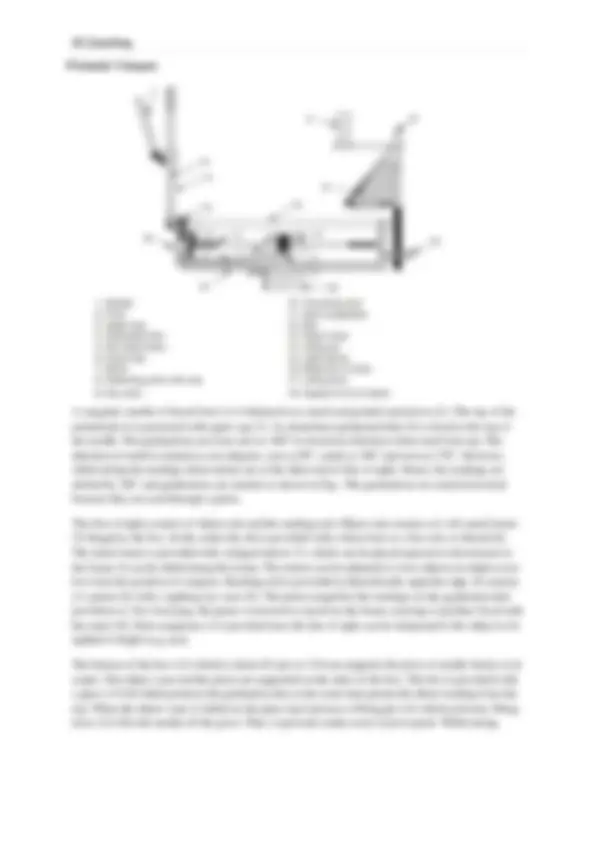
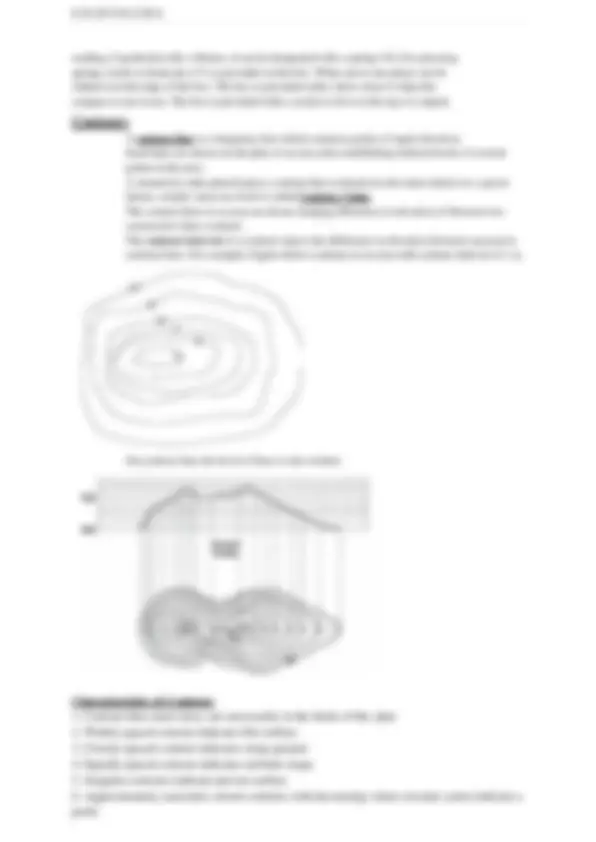
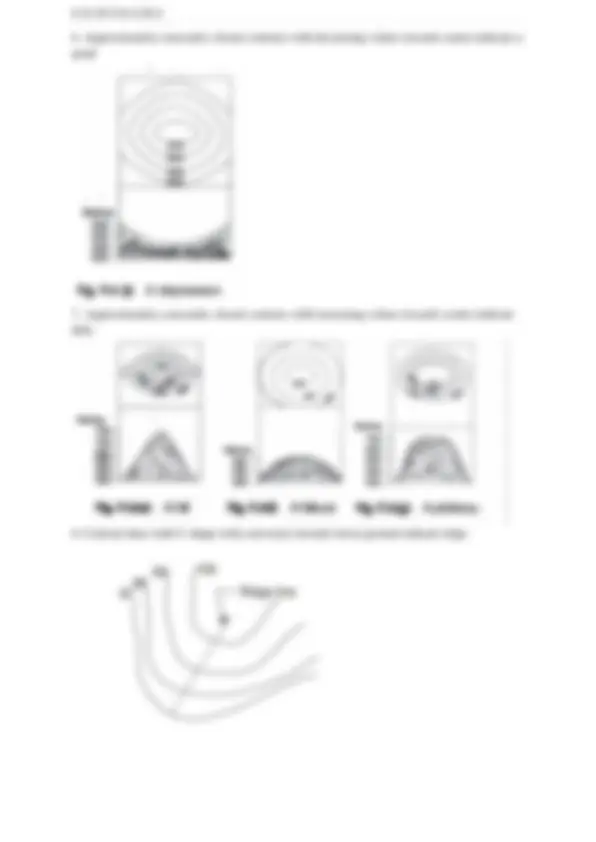
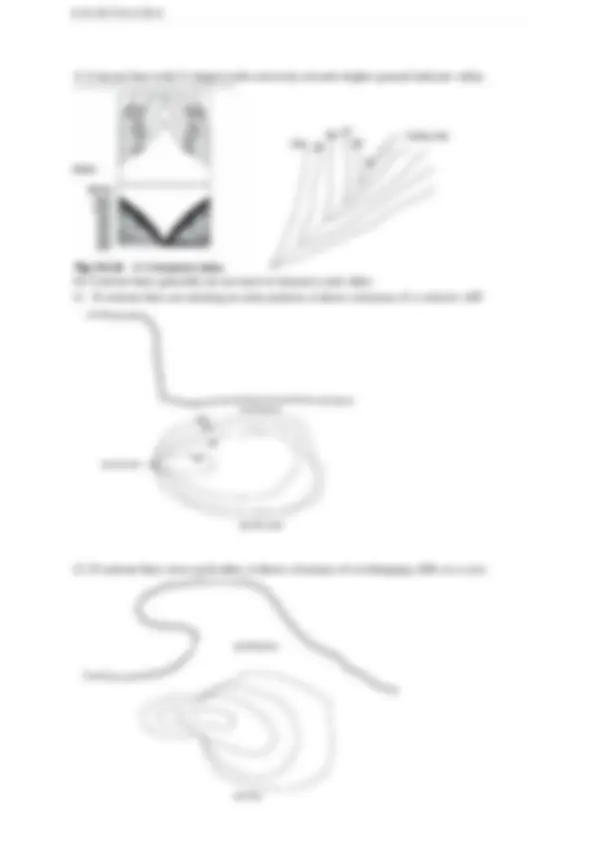



Study with the several resources on Docsity

Earn points by helping other students or get them with a premium plan


Prepare for your exams
Study with the several resources on Docsity

Earn points to download
Earn points by helping other students or get them with a premium plan
Community
Ask the community for help and clear up your study doubts
Discover the best universities in your country according to Docsity users
Free resources
Download our free guides on studying techniques, anxiety management strategies, and thesis advice from Docsity tutors
An introduction to surveying, focusing on horizontal lines, chain surveying, and compass surveying. It covers the principles of surveying, the classification of surveying based on instruments used, and the methods of conducting chain and compass surveys. It also includes information on station points, offsets, and the importance of selecting appropriate station locations.
What you will learn
Typology: Summaries
1 / 48

This page cannot be seen from the preview
Don't miss anything!









































Chain Surveying
What is Surveying? (Not important but need to know) (2 marks)
Surveying is the art of making measurements of objects on, above or beneath the ground to show their relative positions on paper. The relative position required is either horizontal, or vertical, or both.
Why we do surveying? (Not important but need to know) (2 marks)
The earth may be treated as a sphere, shows a circular plane passing through a point A on the earth surface.
The gravitational force is always directed towards the centre of the earth. The plumb-line shown in Fig. is a vertical line. (2 marks) Line perpendicular to vertical line (tangential to earth surface) is known as horizontal line. (2 marks) In surveying all measurement at any point are in the direction of these two lines
If the area to be surveyed is small, the curvature of the earth may be neglected and all plumb lines treated as the same vertical. Hence, the lines normal to plumb line at any point in the area are treated as the same horizontal. All triangles in the area may be treated as plane triangles.
(2 marks - Define Plane surveying) The survey in which earth curvature is neglected is called Plane Surveying. For small survey area, curvature of earth is neglected.
Chain Surveying
(2 marks - Define Geodetic surveying) The survey in which earth’s curvature is considered is known as Geodetic Surveying. For large suvey area, we cannot ignore earth’s curvature in measurement.
(2 marks- Basic fundamental principle in surveying ?) To get accurate results in surveying one should follow the following fundamental principles :-
Locating Point C with respect to Point A and B
What is Scale ?(2 marks) It is not possible and also not desirable to make maps to one to one scale. While making maps all distances are reduced by a fixed proportion. That fixed proportion is called scale of the map. Thus, if 1mm on the paper represents 1 metre on the ground, then the scale of the map is 1 mm = 1 m or 1 mm =1000 mm or 1 : 1000.
What is Representative factor (RF) (2 marks) To make scale independent of the units it is preferable to use representative factor (RF) which may be defined as the ratio of one unit on paper to the number of units it represent on the ground. Thus 1 mm = 1 m is equivalent to RF = 1 / 1000
Classification of surveying Based on the instruments used, surveying may be classified as: (i) Chain survey (ii) Compass survey (iii) Plane table survey (iv) Theodolite survey (v) Tacheometric survey (vi) Modern survey using electronic distance meters and total station (vii) Photographic and Aerial survey
Method of preparing a plan using only linear measurements is by conducting chain surveying. ( marks) Measurement of distances using chain or tape is termed as chaining. (2 marks)
Unit-3 Chain Surveying – Neeraj Kr. Thakur
These tapes are light and flexible. However because of the following disadvantages they are not popular: (i) Due to moisture they shrink. (ii) Due to stretching they extend. (iii) They are not strong. (iv) They are likely to twist.
Metallic Tape They are made up of varnished strip of waterproof linen inter-wooven with small wires of brass, copper or bronze. Tapes of length 10 m, 20 m, 30 m and 50 m are available in a case of leather or corrosion resistant metal fitted with a winding device. These tapes are light, flexible and not easily broken. These tapes are commonly used in surveying.
Steel Tape A steel tape consists of 6 to 10 mm wide strip with metal ring at free end and wound in a leather or corrosion resistant metal case. Steel tapes are superior to metallic tapes as far as accuracy is concerned. They should be oiled regularly to prevent corrosion.
INVAR Tape Invar is an alloy of nickel (36%) and steel. It’s coefficient of thermal expansion is low. Hence errors due to variation in temperature do not affect measurements much. The width of tape is 6 mm. It is available in length 30 m, 50 m and 100 m. It is accurate but expensive.
2. Arrows When the length of the line to be measured is more than a chain length, there is need to mark the end of the chain length. Arrows are used for this purpose.
Unit-3 Chain Surveying – Neeraj Kr. Thakur
3. Pegs Wooden pegs are used to mark the positions of the survey stations or the end points of a survey line The pegs are made of hard wood of 25 mm × 25 mm section, 150 mm long with one end tapered When driven in ground to mark station points they project about 40 mm 4. Ranging Rods and Ranging Poles For ranging intermediate points along the line to be measured, ranging rods and ranging poles are used. Ranging rods are 2 to 3 m long and are made of hard wood. They are provided with iron shoe at one end They are usually circular in section with 30 mm diameter and are painted with 200 mm colour bands of red and white or with black and white. Ranging poles are similar to ranging rods except that they are longer. Their length varies from 4 m to 8 m and diameter from 60 mm to 100 mm.
Unit-3 Chain Surveying – Neeraj Kr. Thakur
(iii) Area is open and (iv) Details to be filled up are simple and less.
In chain surveying only linear measurements are made i.e. no angular measurements are made. Since triangle is the only figure that can be plotted with measurement of sides only, in chain surveying the area to be surveyed should be covered with a network of triangles.
(definitions- 2 marks each) Station: Station is a point of importance at the beginning or at the end of a survey line. Main station : These are the stations at the beginning or at the end of lines forming main skeleton. They are denoted as A, B, C etc. Subsidiary or tie stations : These are the stations selected on main lines to run auxiliary/secondary lines for the purpose of locating interior details. These stations are denoted as a, b, c, ....,etc., or as 1, 2, 3, ... etc. Base line: It is the most important line and is the longest. Usually it is the line plotted first and then frame work of triangles are built on it. Detail lines: If the important objects are far away from the main lines, the offsets are too long, resulting into inaccuracies and taking more time for the measurements. In such cases the secondary lines are run by selecting secondary stations on main lines. Such lines are called detail lines. Check lines: These are the lines connecting main station and a substation on opposite side or the lines connecting to substations on the sides of main lines. The purpose of measuring such lines is to check the accuracy with which main stations are located.
Offsets (2 Marks) Lateral measurements to chain lines for locating ground features are known as offsets. For this purpose :-
Unit-3 Chain Surveying – Neeraj Kr. Thakur
For setting perpendicular offsets any one of the following methods are used: (i) Swinging (ii) Using cross staffs
The following points should be considered in selecting station points: (4 Marks)
(i) It should be visible from at least two or more stations. (ii) As far as possible main lines should run on level ground. (iii) All triangles should be well conditioned (No angle less than 30º). (iv) Main network should have as few lines as possible. (v) Each main triangle should have at least one check line. (vi) Obstacles to ranging and chaining should be avoided. (vii) Sides of the larger triangles should pass as close to boundary lines as possible. (viii) Tresspassing and frequent crossing of the roads should be avoided.
When a survey line is longer than a chain length, it is necessary to align intermediate points on chain line so that the measurements are along the line.The process of locating intermediate points on survey line is known as ranging.
There are two methods of ranging viz., direct ranging and reciprocal ranging. Direct Ranging If the first and last points are intervisible this method is possible.
Unit-3 Chain Surveying – Neeraj Kr. Thakur
(i) Personal errors (ii) Compensating errors, and (iii) Cumulating errors.
Personal errors Wrong reading, wrong recording, reading from wrong end of chain etc., are personal errors. These errors are serious errors and cannot be detected easily. Care should be taken to avoid such errors. Compensating Errors (i) Incorrect marking of the end of a chain. (ii) Graduations in tape may not be exactly same throughout. These errors may be sometimes positive and sometimes negative. Cumulative Errors The errors, that occur always in the same direction are called cumulative errors. (i) Bad ranging (ii) Bad straightening (iii) Erroneous length of chain (iv) Temperature variation (v) Variation in applied pull (vi) Non-horizontality (vii) Sag in the chain.
Unit-3 Chain Surveying – Neeraj Kr. Thakur
Toposheets or Topographical Maps Topographical map is also known as Topographical Survey Sheet or Toposheet. It is a multipurpose map drawn on large scale and covers a small area. It shows both natural features such as relief, drainage, vegetation, etc. and man made features such as roads, railways, canals, etc. It shows even the small features in good details because it is drawn on a large scale. Importance The are used by large number of professionals including military personnels, administrators,planners,researchers,travellers, etc. Most of the military operations are based on the study of topographical maps. Future planning of any area also depends upon the study of these maps. Topographical Maps of survey of India The survey of India department was established in 1767 with headquarters at 1767. This department has published many series of toposheets. International Series: This is drawn on 1:10,00,000 scale and is also known as one to one million sheet. Each sheet has 4* latitude and 6* longitude. Heights are shown in metres. India and Adjacent countries: They are also drawn on 1:10,00,000 scale. Longitude- 4* and Longitude-4. They have been given serial numbers like 45,46,47 etc which are known as index numbers. This series forms the base for other series. Topographical Maps of survey of India Quarter Inch to Mile series: I Inch = 4 miles or 1:2,53, Each 1:1 million sheet is divided into 16 parts and each part is labelled from A to P eg. 63A, 63B, 63C etc. Their latitudinal and longitudinal extent is 1 and they are known as degree sheets. The new editions of these sheets have been published in metric scale, 1:2,50,000 scale. Their contour interval is 100 metres. Topographical Maps of survey of India 1:25,000 series- Each Sheet of 1:50,000 series is further divided into 4 parts. Two parts along latitude and two parts along longitudes. They are numbered according to direction, such as 63K/12/NW, 63K/12/NE, 63K/12/SW, 63K/12/SE.
Unit-3 Chain Surveying – Neeraj Kr. Thakur
Compass Surveying
What is compass survey.
Instruments used
Compass is an instrument which can be used to measure the direction of a survey line with respect to magnetic north-south.
The magnetic north-south direction which is the reference direction is called meridian (reference direction) and the angle between the line and the meridian is called bearing.
Compass Surveying
Prismatic Compass
Note: Surveyor’s Compass is not in syllabus but comparision should be studied.
The direction shown by a freely suspended and properly balanced magnetic needle is called magnetic meridian and the horizontal angle made by a line with this meridian is known as magnetic bearing.
The points of intersection of earth’s axis with surface of the earth are known as geographic north and south pole. The line passing through geographic north, south and the point on earth is called true meridian at that point and the angle made by a line passing through that point is called true bearing.
All bearings are angles where as all angles are not Bearings
Compass Surveying
While traversing along lines A, B, C, D ..., the bearing of lime AB is called fore bearing of AB and the bearing of BA is called back bearing. Fore bearing and back bearing differ by
180°. B
Angle of Declination
The magnetic meridian and the true meridian may not coincide with each other in a place. The horizontal angle between these two meridians is known as magnetic declination. The magnetic north at a place may be towards east or west of true north. If it is towards east, it is known as eastern or +ve declination. Western declination is known as – ve declination.
True Bearing = Magnetic Bearing + - Angle of Declination ( +ve for east , -ve for west )
Compass Surveying
It may be observed that conversion table is as given below:
Compass Surveying
For BB of CD,DE can also be found out by adding 180 degrees and if it exceeds 360 degrees than substract 360 from the answer.
BB of CD = 285 +180 =465 – 360 = 105 BB of DE = 215+180=395-360=
Computation of Internal Angles
At any point, if bearings of any two lines are known, the angle between these two lines can be easily found by drawing a neat sketch, and then noting the difference.
Question Based on Whole Circle Bearing